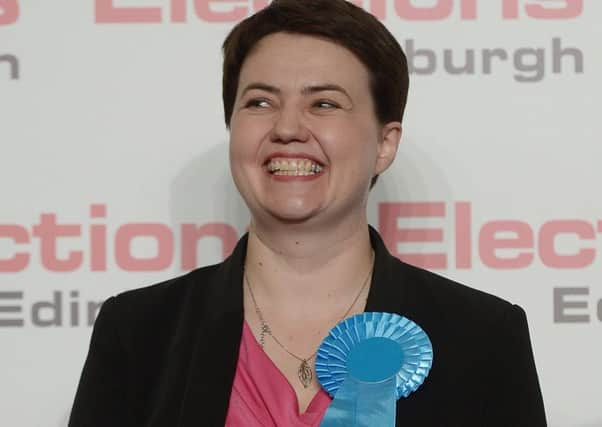Ian Swanson: Expect the unexpected after Tory triumph


This was the party that had never managed to re-establish itself as a credible force since its wipe-out in the 1997 general election, when it lost all its Scottish MPs.
Recoveries had been forecast before and failed to materialise. Surely Ms Davidson’s ambitious targets were just the optimistic enthusiasm of a new leader, bound to end in disappointment.
Advertisement
Hide AdAdvertisement
Hide AdPolls during the election campaign suggested she was in with a chance – the Conservatives and Labour were very close. Tory chiefs hoped they might get as many as 25 MSPs.
But when it happened, the Tory comeback was even more dramatic – 31 MSPs and a personal victory for Ms Davidson, unexpectedly taking Edinburgh Central, where the party had been fourth out of four in the last election. The Conservatives are indeed now the largest opposition party at Holyrood, just as she predicted.
So is it a real Tory revival or is it the result of anti-independence voters from all parties rallying behind the Conservatives in the hope of stopping the SNP and another referendum?
Ms Davidson achieved her astonishing advance on a very clear platform of providing a strong opposition to the SNP and rejecting another referendum. And the campaign relied heavily on her own popularity rather than the party’s policies.
Advertisement
Hide AdAdvertisement
Hide AdBut the Tories gained ground almost everywhere – winning seats in former strongholds like Eastwood, Aberdeenshire and the South of Scotland and cutting Nationalist majorities in the north-east and Perthshire, but also increasing their vote in many seats across the country where they were not the main challenger.
Although they won more seats than Labour and were ahead of them in list votes, they were narrowly behind Labour in the number of constituency votes they secured. But the Tory share of that constituency vote did rise dramatically from 14 per cent to 22 per cent.
Both Ms Davidson’s predecessors as Tory leader at Holyrood – David McLetchie and Annabel Goldie – were popular and capable figures, but that did not translate into votes for their party.
Ms Davidson has managed to persuade people to make the leap from liking the leader to putting their cross against the party on the ballot paper.
Advertisement
Hide AdAdvertisement
Hide AdIt has been partly down to the relentless emphasis on her own personality – which does not match the Tory stereotype – and the playing down of the party label.
But at a time when politics seems to remain polarised between the Yes and No sides on independence, the promise of standing up to the SNP appears to have been the clinching factor.
Tories accept there was a lot of tactical voting going on. Ms Davidson herself acknowledged that not all those who voted for her in Edinburgh Central were “true-blue, dyed-in-the-wool Tories”.
And she went on: “I completely understand lots of people voted for us for the first time. We’re on probation and we want to do well by them. These are very mobile votes and they can be taken elsewhere pretty quickly. One good election doesn’t make a revival.”
Advertisement
Hide AdAdvertisement
Hide AdThat’s a realistic assessment from a down-to-earth politician. Who knows how Scottish politics will develop over the next few years. It’s looking as unpredictable as ever.
ian.swanson@edinburghnews.com